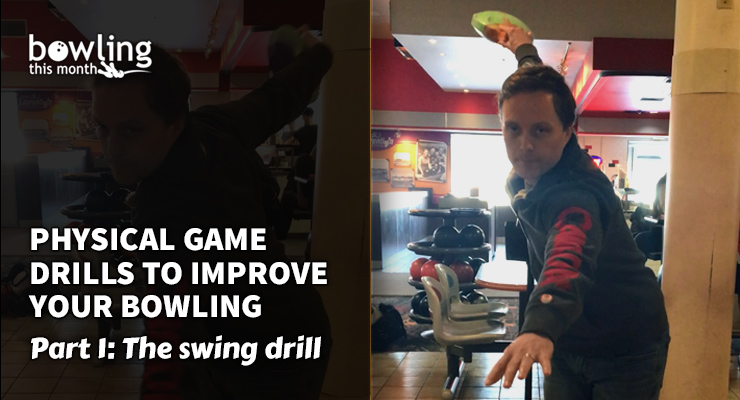One of the most common questions I hear from both coaches in training and bowlers looking to improve is what they need to do in order to fix something once they’ve identified the need. For many people, picking out what’s wrong is not the hard part; what to do next is the more serious challenge.
For that reason, my next few articles will focus on the physical drills that I use most to help bowlers correct problems with their games. In no particular order, the three most common drills I use are:
- the swing drill,
- the slide drill, and
- the ball start drill.
Of course, these three drills can’t possibly address every single concern that a bowler might face. For example, none of these drills address footwork as a whole. But, over the thousands of hours I’ve spent on lanes with bowlers, these are easily the three drills that I’ve used most often with beginner and elite bowler alike.
The swing drill
The primary use of the swing drill is to correct swing direction problems, but other uses also include correcting hand positions, modifying swing height, encouraging a free swing, and increasing core torsion (i.e. the “T position,” with the non-bowling arm out in front at the top of the backswing).
Most bowlers do not have a perfectly straight swing. This is even true of most elite bowlers. However, there is a certain range of tolerance for the shape and direction of the swing that gives the best results. Coaches often refer to this as the “half head” rule: if the ball never gets farther inside or outside half the head, then the swing is generally considered straight enough that it’s not really a concern.
The real challenge in fixing a swing is that, while most bowlers don’t have a perfectly straight swing, most aren’t really aware of it. By this I mean that even if you’re told that your swing is not straight, and even if you see it on video, your brain interprets your swing as “normal,” and any deviation from that “normal” causes a lot of discomfort.
Think about tying your shoe. Now think about tying your shoe without the use of your index fingers. Sure, you can do it using other fingers, but you have to work much ...
This article is only available to Bowling This Month subscribers. Click below to get instant access to this article and all of our other premium instructional content.
Subscribe to Bowling This Month
Already a Bowling This Month subscriber? Click here to log in.
